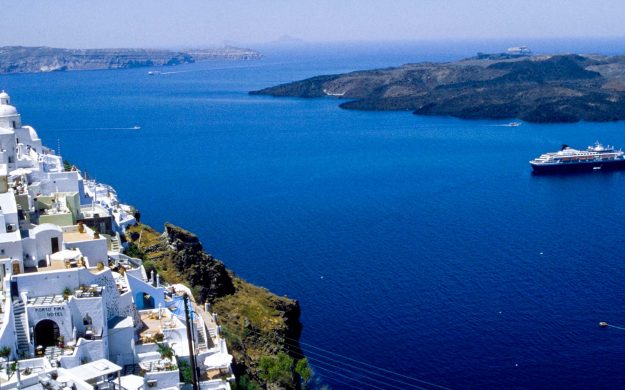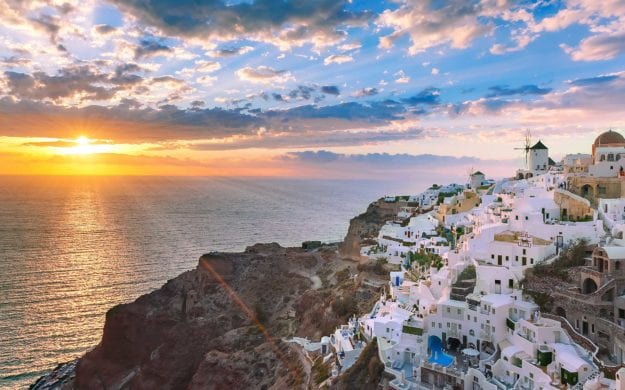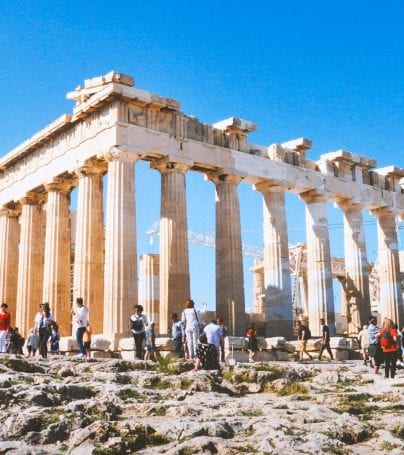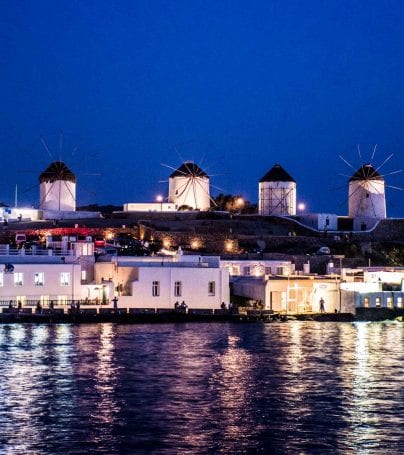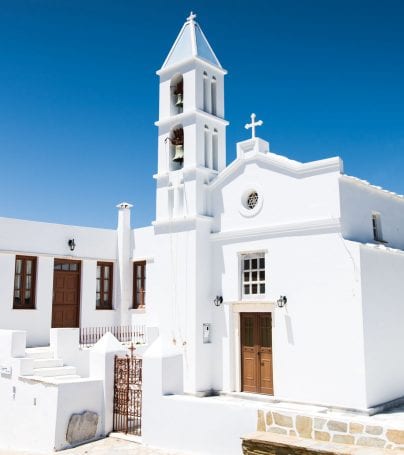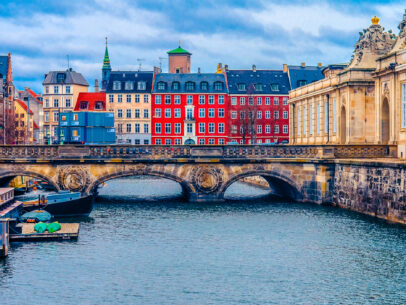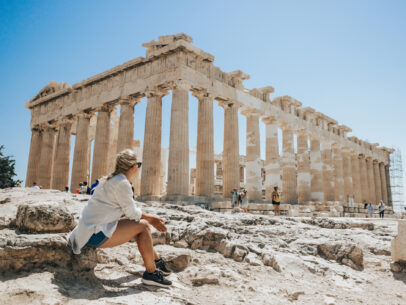Delos Adventure Tours
The Island of Delos, isolated in the center of the roughly circular ring of islands called the Cyclades, near Mykonos, had a position as a holy sanctuary for a millennium before Olympian Greek mythology made it the birthplace of Apollo and Artemis. From its Sacred Harbour, the horizon shows the two conical mounds that have identified landscapes sacred to a goddess in other sites: one, retaining its archaic name, Mount Kythonos, is crowned with a sanctuary of Dionysus.
Established as a cult center, Delos had an importance that its natural resources could never have offered. In this vein Leto, searching for a birthing-place for Apollo, addressed the island:
Delos, if you would be willing to be the abode of my son Phoebus Apollo and make him a rich temple –; for no other will touch you, as you will find: and I think you will never be rich in oxen and sheep, nor bear vintage nor yet produce plants abundantly. But if you have the temple of far-shooting Apollo, all men will bring you hecatombs and gather here, and incessant savour of rich sacrifice will always arise, and you will feed those who dwell in you from the hand of strangers; for truly your own soil is not rich.
Investigation of ancient stone huts found on the island indicate that it has been inhabited since the 3rd millennium BC. Thucydides identifies the original inhabitants as piratical Carians who were eventually expelled by King Minos of Crete. By the time of the Odyssey the island was already famous as the birthplace of the twin gods Apollo and Artemis. Indeed between 900 BC and AD 100, sacred Delos was a major cult centre, where Dionysus is also in evidence as well as the Titaness Leto, mother of the above mentioned twin dieties.
A number of “purifications” were executed by the city-state of Athens in an attempt to render the island fit for the proper worship of the gods. The first took place in the 6th century BC, directed by the tyrant Pisistratus who ordered that all graves within site of the temple be dug up and the bodies removed to perimeter locations. In the 5th century, during the 6th year of the Peloponnesian war and under instruction from the Delphic Oracle, the entire island was purged of all dead bodies. It was then ordered that no one should be allowed to either die or give birth on the island due to its sacred importance and to preserve its neutrality in commerce, since no one could then claim ownership through inheretance. Immediately after this purification, the first quinquennial festival of the Delian games were celebrated there.
After the Persian wars the island became the natural meeting-ground for the Delian League, founded in 478 BC, the congresses being held in the temple (a separate quarter was reserved for foreigners and the sanctuaries of foreign deities). The League’s common treasury was kept here as well until 454 BC when Pericles removed it to Athens.
Since 1873 the Ecole Française d’Athenes (“French School of Athens”) has been excavating the island, the complex of buildings of which compares with those of Delphi and Olympia.
The island had no productive capacity for food, fiber, or timber, with such being imported. Limited water was exploited with an extensive cistern and aquaduct system, wells, and sanitary drains. Various regions operated agoras (markets). The largest slave market in the larger region was also maintained here.
In 1990, UNESCO inscribed Delos on the World Heritage List, citing it as the “exceptionally extensive and rich” archaeological site which “conveys the image of a great cosmopolitan Mediterranean port.”
- The small Sacred Lake in its circular bowl, now dry, is a topographical feature that determined the placement of later features.
- The Minoan Fountain was a rectangular public well hewn in the rock, with a central column; it formalized the sacred spring in its present 6th century BC form, reconstructed in 166 BC, according to an inscription. Tightly-laid courses of masonry form the walls; water can still be reached by a flight of steps that fill one side.
- There are several market squares. The HellenisticAgora of the Competaliasts by the Sacred Harbour retains the postholes for market awnings in its stone paving. Two powerful Italic merchant guilds dedicated statues and columns there.
- The Temple of the Delians is a classic example of the Doric order; a pen-and-wash reconstruction of the temple is illustrated at Doric order
- The Terrace of the Lions dedicated to Apollo by the people of Naxos shortly before 600 BC, had originally nine to twelve squatting, snarling marble guardian lions along the Sacred Way; one is inserted over the main gate to the Venetian Arsenal. The lions create a monumental avenue comparable to Egyptian avenues of sphinxes. (There is a Greek sphinx in the Delos Museum.)
- The meeting hall of the Poseidoniasts of Beirut2nd century BC. To their protective triad of Baal/Poseidon, Astarte/AphroditeEchmoun/Asklepios, they added Roma. housed an association of merchant, warehousemen, shipowners and innkeepers during the early years of Roman hegemony, late and
- The platform of the Stoibadeion dedicated to Dionysus bears a statue of the god of wine and the life-force. On either side of the platform, a pillar supports a colossal phallus, the symbol of Dionysus. The southern pillar, which is decorated with relief scenes from the Dionysiac circle, was erected ca. 300 BC to celebrate a winning theatrical performance. The statue of Dionysus was originally flanked by those of two actors impersonating Paposilenoi (conserved in the Delos Museum). The marble theatre is a rebuilding of an older one, undertaken shortly after 300 BC.
- The Doric Temple of Isis was built at the beginning of the Roman period to venerate the familiar trinity of Isis, the Alexandrian Serapis and Anubis.
- The Temple of Hera, ca 500 BC, is a rebuilding of an earlier Heraion on the site.
- The House of Dionysus is a luxurious 2nd century private house named for the floor mosaic of Dionysus riding a panther.
- The House of the Dolphins is similarly named from its atrium mosaic, where erotes ride dolphins; its Phoenician owner commissioned a floor mosaic of Tanit in his vestibule.
Customize Your Dream Adventure
We are here to help craft tailor-made adventures for individuals, couples, families, and groups of explorers.

